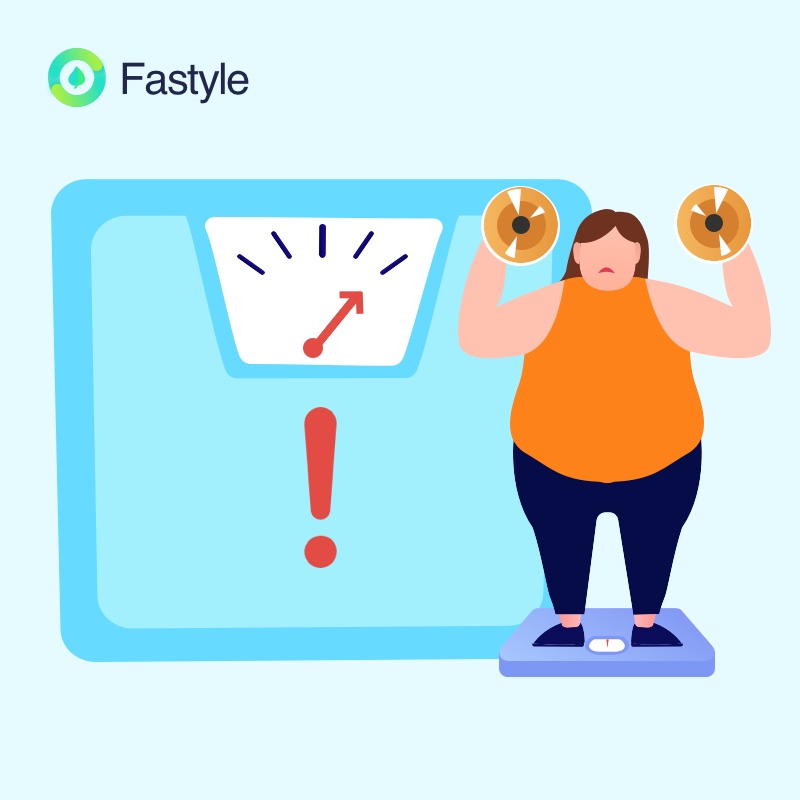As is known to all, compared with a thinner one, a fatty man may be much easier to lose weight because the majority of the weight that has been lost is mostly fat, that is to say, the one with a high body fat percentage is likely to see the huge change of body shape. So, if you want to know how many pounds you can drop, you should know at first the fat percentage in your body. Here are five main measuring ways for your reference.

Tape measures around the waist, hip, and neck circumference.
This measuring way asks you to measure your waist, hip, and neck circumference via tape at first. After having got these three circumferences, you should enter your numbers into the formula below, then you will get the fat index of your body fat percentage.
[163.205 x log10(waist + hip – neck)] – [97.684 x log10(height in inches)] – 78.387
However, such a calculating way has its pros but cons too.
Pros
When combined with BMI, it is a good tool used to observe weight and body shape changes. In addition, the specific operation is easy to do, because what you need to do is measure and calculate.
Cons
It fails to reflect your body fat percentage accurately, as the real number of your waist, hip, and neck vary from the measured numbers, and these numbers vary from measuring way and measuring people.
Calipers for skin-fold test
Calipers for skin-fold test estimates the percentage of body fat by measuring skin-fold thickness at specific locations on the body. The measurement sites vary depending upon the specific skin-fold testing protocol being used, but typically include the following seven locations on the body:
- Abdomen: Next to the belly button
- Midaxilla: Midline of the side of the torso
- Pectoral: The mid-chest, just forward of the armpit
- Quadriceps: Middle of the upper thigh
- Sub-scapular: Beneath the edge of the shoulder blade
- Suprailiac: Just above the iliac crest of the hip bone
- Triceps: The back of the upper arm
Once you have measured these numbers, here are two formulas for you to calculate.
Body Density (men) = 1.112505 – 0.0013125 * X3 + 0.0000055* (X3) ^2 – 0.000244*age
Where X3 is the sum of the following skin-folds: triceps, chest, and sub-scapular.
Body Density (women) = 1/089733 – 0.0009245*X3 + 0.0000025*(X3) ^2 – 0.0000979*age
Where X3 is the sum of the following skin-folds: triceps, suprailia, and abdominal. (Age is always in years). Once the body density has been determined, the percentage of body fat percentage is calculated by the following formula:
Percent fat = ((4.95/Body Density))-4.5) * 100.
This measurement also has pros and cons
Pros
It is more accurate and usually used by a gym trainer, dietitian, or physiotherapist.
Cons
You have to turn to others because one cannot do it by him/herself, otherwise, the result may be not accurate. Besides that, the result varies from measuring people to people, measuring position to position.
Bio-electrical impedance analysis (BIA)
Bio-electrical impedance analysis is a method that uses thin tissue as a good conductor and fat as an insulator to measure human body resistance by sending current through different electrodes. The test results into the equation containing height, weight, sex, age to calculate the body fat content and ratio.
Pros
It is easy to calculate with a special tool, and the result is more reliable.
Cons
The result may change with the temperature, the food you eat, and some other factors.
Dual-energy x-ray absorptiometry (DEXA) for bone mineral mass
Dual-energy x-ray absorptiometry is one of the more common bone mineral density methods. It can accurately measure and evaluate bone minerals density and the composition of human fat tissue in the position of the intervertebral disc, proximal femoral head, and whole-body bone.
Pros
It offers a validated assessment of fat mass in a clinical setting.
Cons
It is very expensive and not available anywhere.
MRI & CT scans
Magnetic resonance imaging or computed tomography is a method based on x-ray to measure body fat content by taking advantage of the fact that human tissue calls are excited to different degrees under the action of magnetic fields.
Pros
It is very accurate to measure the content of body fat.
Cons
It is very expensive, and you cannot do it anytime and anywhere.
Other Simple Measurements of Body Fat Percentage
In addition to the above main measuring ways, there are some other ways to observe your changes apart from digits on your weight scale:
Your clothes fitting
You can judge whether you have become fatter or thinner by observing your clothes fit.
Photos of your body
You can roughly know whether you become fatter or thinner by comparing with your previous photos of your body.
Muscle mass
For obese individuals, weight loss usually comes with some muscle loss.
Your stamina and energy level
It is not a direct body measurement, but it may be an indicator of your heart health and the ability you can do to lose weight.
Your relationship with food
The change of your desire for foods, and your appetite can also be a good way to have a general understanding of whether your body shape has some changes.
Your metabolic profile
Paying attention to the metabolic profile of your body can be and a reliable way to observe the change of your body and judge whether having an existing health issue or not.
Generally speaking, the body fat percentage in your body can determine how many pounds you are likely to lose. So, if you long for knowing how much possibility you can lose weight, you can take the above methods into consideration. However, what should you know is that even though these ways are useful but not totally accurate, that is to say, you cannot rely on them totally.